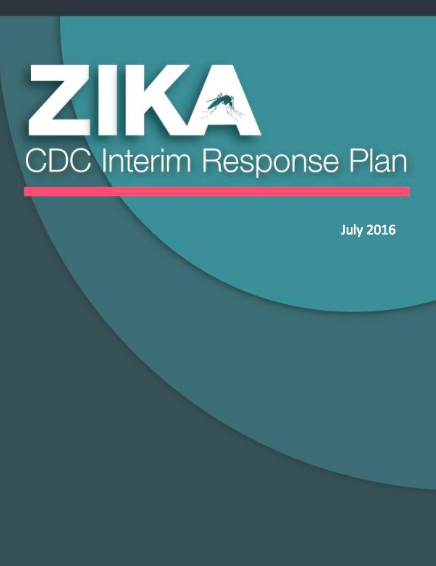You are here
CLICK HERE - REVISED - Zika - CDC Draft Interim Response Plan - July 2016 (57 page .PDF report)
This version of the CDC Interim Zika Response Plan replaces the previous document posted on June 14, 2016. Notable updates include:
Revised guidance is included on the risk of Zika virus transmission, including the potential for sexual transmission both from men and women to sex partners.
When a case of locally acquired Zika virus infection is identified, state and local health departments should initiate interventions and target these interventions appropriately. Based on available epidemiologic, entomologic, and environmental information, states will define geographic areas for targeted Zika virus interventions.
The described continuum of preparedness to response has been condensed from 5 phases (0 to 4) to 4 phases (0 to 3). Transmission phases have been reorganized and renamed: “Suspect case of local transmission,” “Confirmed local transmission,” and “Confirmed multiperson local transmission.”
Guidance on the determination of geographic areas for interventions and issuance of travel guidance in the setting of local transmission has been revised.
Revised Zika virus laboratory testing guidance: RT-PCR testing of serum and urine is recommended less than 14 days after symptom onset. An approved serologic assay should be used for testing of serum collected 14 days to 12 weeks after symptom onset and for RT-PCR negative serum collected within 14 days of illness onset.
Enhanced case identification is described to include outreach to physicians to encourage Zika virus testing among pregnant women and among patients with clinically compatible illness in areas where Aedes aegypti and Aedes albopictus mosquitoes are likely to be abundant and where travel-associated cases have been identified.
Birth defects among infants born to women with Zika infection during pregnancy should be reported to state-based birth defects surveillance systems. CDC will work with jurisdictions to establish or enhance population-based surveillance systems for microcephaly and other Zika-related adverse fetal and infant outcomes.
--------------------------------------------------------------------------------------
nytimes.com - by Sabrina Tavernise - June 21, 2016
. . . The last week released a 58-page blueprint for what to do if a homegrown case of Zika surfaces.
The mosquito that carries the virus, the Aedes aegypti, is found mostly in the South and Southwest, and the C.D.C. says it is focusing much of its mosquito control effort on six states and one county most at risk: California, Texas, Florida, Hawaii, Arizona and Louisiana and Los Angeles county. As far as anyone knows, the mosquito in this country has neither picked Zika up nor started to spread it. But that could happen anytime, experts warn, especially now that hundreds of Americans have been infected with the virus while abroad. (The virus can also be sexually transmitted; the C.D.C. is planning for that, too.) . . .
. . . What would actually happen, should there be a local case?
The C.D.C. plans to help the local government investigate it and warn residents. The agency detailed how to define the area of transmission — important for warning pregnant women what places to avoid — and underscored the urgency of alerting blood banks. If asked, the agency will dispatch a team of experts to help with everything from logistics to lab testing.
CLICK HERE - CDC - Zika Virus - State and Local Health Departments - Planning and Preparedness




Recent Comments